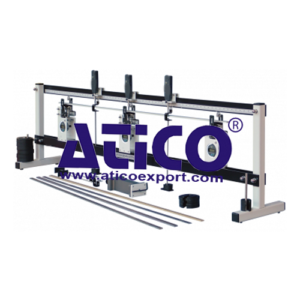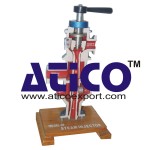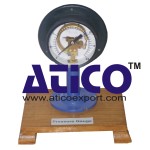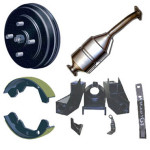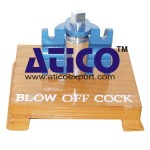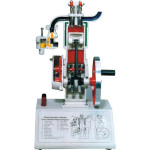Description
The Beam Apparatus allows an extensive range of experiments to cover virtually all course requirements relating to bending of beams. The basic unit provides facilities for supporting beams on simple, built-in and sinking supports, applying point loads, and measuring support reactions and beam deflections. It includes five different test beams. A pack of ten additional specimen beams is available for further experiments. The Beam Apparatus can be used for an almost limitless number of experiments ranging from determination of the elastic modulus for beams of different materials, through to studies of continuous beams with any loading. Great care has been taken at the design stage to ensure maximum flexibility and ease of use. The main frame of the apparatus consists of an upper cross-member carrying graduated scales and two lower members bolted to T-legs to form a rigid assembly. The three load cells and cantilever-support pillar slide along the lower members and can be clamped firmly in any position. The load cells have direct digital readout and each is fi tted with a hardened steel knife edge which can be adjusted to set the initial level or to simulate a sinking support. Locking pins can convert each load cell to a rigid support when required. The cantilever support is a rigid pillar with a sturdy clamping arrangement to hold the beams when built-in end conditions are required. Four weight hangers and a set of weights are supplied to apply static loads. Three digital indicators measure all beam deflections. The indicators mount on magnetic carriers that slide along the upper cross-member. The indicators, carriers, load cells and weight hangers all have cursors that register on the scale (located on the upper cross-member) to ensure easy, accurate positioning. All digital indicators and load cells have sockets and cables for connection to optional Versatile Data Acquisition System (VDAS®). The standard test beams are in three thicknesses and include three different materials. They are suitable for the complete range of experiments covering different loading and support configurations. The optional set of beams provide for experiments on diff erent types of beam including compound, channel and non-uniform beams of various materials. The Beam Apparatus comes complete with the laboratory handbook ‘Structural and Stress Analysis’ by T H G Megson, and a comprehensive user guide. For quick and reliable tests, optional VDAS® gives accurate real-time data capture, monitoring and display, calculation and charting of all important readings on a computer (computer not included).
Learning Outcomes
- Verification of the bending equation
- Determination of flexural rigidity and elastic modulus (Young’s modulus)
- Verification of static equilibrium
- Deflection of beams on two simple supports with point loads
- Reciprocal properties for loads and deflection
- Simple and propped cantilevers with any loading
- Continuous beams – statically indeterminate cases for simply supported beams and cantilevers on more than two supports with any loading (including measurement of unknown reactions)
- Simply supported and cantilever beams with sinking supports
- With the Specimen Beams, these additional experiments can be done:
- The effects of material and section shape on flexural rigidity
- Bending characteristics of a brass/steel compound beam, with and without shearing connection between the two layers
- Equivalent sections – characteristics of a metal-faced wooden beam
- Deflections on a non-uniform (tapered) beam or cantilever
Specifications
ATICO is committed to a programme of continuous improvement; hence we reserve the right to alter the design and product specifcation without prior notice.
Nett dimensions and weight:
2000 mm x 580 mm x 550 mm; 43 kg
Packed dimensions and weight:
0.63 m3; 120 kg (approximately)
Deflection indicators:
Digital Indicators with sockets for connection to VDAS®
Load cell supports:
Fitted with digital indicators with sockets for connection to
VDAS®
Five test beams supplied:
• 3 steel: 3.2 mm, 4.8 mm and 6.4 mm thick (nominal)
• 1 brass: 6.4 mm thick (nominal)
• 1 aluminium: 6.4 mm thick (nominal)
All beams are of nominal dimensions 19 mm wide x 1350 mm long
Specimen Beams:
Nett dimensions and weight:
600 mm x 15 mm x 310 mm; 3.5 kg
Packed dimensions and weight:
0.036 m3; 4 kg (approximately)
Ten test beams supplied:
• 4 steel (1 tapered)
• 1 brass
• 1 steel and brass compound
• 2 aluminium (1 with channel cross-section)
• 1 hardwood
• 1 aluminium and wood compound
All beams are of different dimensions and cross-section
Operating Conditions
Operating environment:
Laboratory
Storage temperature range:
–25°C to +55°C (when packed for transport)
Operating temperature range:
+5°C to +40°C
Operating relative humidity range:
80% at temperatures < 31°C decreasing linearly to 50% at 40°C

